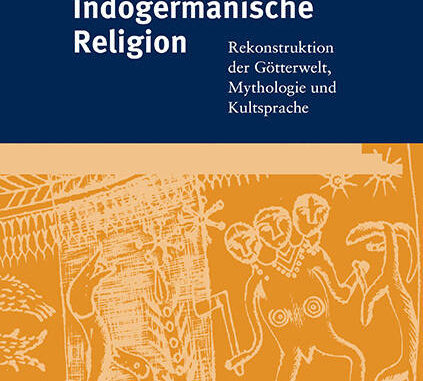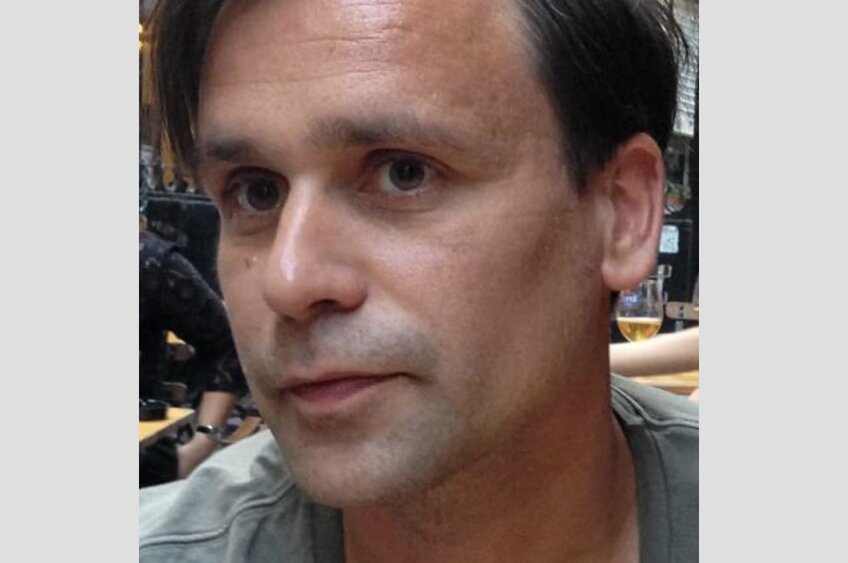
Review
Modern Semiotics and the Reconstruction of Ancient Religions of Europe
By Peter Jackson-Rova
Link to the publisher’s web page (in German). https://www.winter-verlag.de/en/detail/978-3-8253-9618-3/Oettinger_Rova_Indogermanische_Religion/
What did people believe in ancient Europe in the millennia before the spread of Christianity? Just as many of the languages in the area between Western Europe and India are derived from a common ancestor, the same applies to the indigenous religions of its ancient speakers. Reconstructing this religion as far as possible was the task that the German historical linguist Norbert Oettinger (Friedrich-Alexander-University Erlangen-Nürnberg) and the Swedish historian of religions Peter Jackson Rova (Stockholm University) have jointly set themselves in this book. It is the first systematic study not only of the names of the gods and myths, but of the entire spectrum of manifestations of that religion.
The study of Indo-European (IE) religion can be seen as an offshoot of comparative Indo-European linguistics. Like the related comparative study of other ancient cultural expressions (poetic language, kinship systems, economy, legal systems, etc.), the premise for this study is the hypothetical and less differentiated reconstructed language commonly referred to as Proto-Indo-European, from which the historically documented IE languages – extinct as well as living – developed, and which today are spoken by more than a third of the world’s population, ranging from today’s speakers of English, Spanish and Portuguese in North and South America; to most of the indigenous languages of Europe; the Iranian languages of West and Central Asia; and the Indo-Aryan languages of Southeast Asia. The fortunate circumstance that several ancient Indo-European languages are recorded from as early as the 2nd millennium BC has facilitated efforts to reconstruct the grammar and vocabulary of the common ancestral language in great detail. This in turn has contributed to a relatively accurate picture of the prehistoric cultural as well as geographical environment in which this language was once spoken before it began to disintegrate into more distinct dialects, probably as a result of successive migrations from an area that today includes parts of southern Russia and the Ukraine from around the middle of the 5th millennium BC. The so-called Core Indo-European, which forms the main starting point of the present study, should still have been relatively undifferentiated during the earliest phase (known as the Uruk period) of the Sumerian civilization in Mesopotamia (c. 4000 to 3100 BC). Through the recent study of extracted ancient DNA, the genetic origins of this prehistoric population is becoming more clearly linked to the Yamnaya archaeological complex appearing across the steppes north of the Black and Caspian Seas (see the article “The genetic origins of the Indo-European” published in Nature [5 February 2025] [https://www.nature.com/articles/s41586-024-08531-5]).
For those interested in the modern history of semiotics, it is worth noting that the study of IE religion and mythology can be related in both a direct and indirect way to one of the founding figures of semiotics: Ferdinand de Saussure. Directly through de Saussure’s own pioneering contributions to historical linguistics, the study of ancient Germanic legends and IE hermetic poetic language (see especially Jean Starobinski’s study of de Saussure’s unpublished cahiers d’anagrammes); indirectly through the influence that de Saussure’s disciple Antoine Meillet came to exert on two of the most influential representatives of Indo-European cultural studies in the twentieth century: Émile Benveniste and Georges Dumézil. While the authors choose to take a cautious approach to Dumézil’s insistence on the centrality of the extralinguistic so-called tripartite ideology to the study of Indo-European religion, Benveniste’s study of IE institutions (including religion) is still regarded as a model for how the study of IE religion can be further enriched and presented in a more updated, comprehensive and systematic form.
Extract from the English summary:
“When looking at Indo-European religion as a whole, as far as it can be reconstructed, the first thing that catches the eye is the great importance of the following family of gods: the Sky God and his sons, namely the divine Twins and the Weather God, as well as his daughter, the Dawn. His wife was Mother Earth. The Sky god had the function of the father of gods and humans, the twins helped people to return home happily (*nosto-) and were specifically saviors in distress at sea. The weather god had the function of fertility and heroic deeds, which also included the conquest of cattle. Finally, the Dawn was responsible for love and poetry. Accordingly, these deities also relate to the most important myths that can be reconstructed. The reconstructed Indo-European mythology may appear meagre if it is only understood as a series of stories or narrative elements. However, they become an abundant source of research when they are examined in their ritual contexts. Here they unfold in a rich and differentiated way in cultic and heroic poetry. They also become more important because they reflect changing social conditions.
A problem arises when relative chronology comes into play. Indo-European reconstruction cannot distinguish systematically between different epochs of the protolanguage. However, since Anatolian left the common group much earlier than the other individual Indo-European languages, one should try to differentiate between earlier and later Indo-European as far as possible. In the area of religion, it can be seen that Anatolian continues the following elements of Proto-Indo-European religion: the Sky God (in the Proto-Anatolian appellative ‘god’) and presumably also the Earth Goddess, as well as the Weather God and the Deer God as patron saint of hunters. Part of the royal death ritual has also been preserved. The Hittite spirit of the dead was possibly also inherited. The weather god was also the cause of the emergence of a stylistic figure that contains a metaphor. These elements were therefore already present in the earlier phase of the Indo-European protolanguage. In contrast, the mythology of the god-dess Dawn, for example, may have belonged to the later phase. This could be supported by the absence of the otherwise very common underlying root *h2wes- ‘(morning) dawn’ _in Anatolian.
Cult specialists such as priests and singers certainly played a role in the propagation of deities. This is probably related to the fact that the Weather God, the Twins and the goddess Dawn in particular are exalted by more poetic formulations than most other deities. They and their deeds lent themselves particularly well to poetic embellishment, which in turn pro-moted their worship. It was probably one and the same poets who created hymns to the gods and heroic songs. Therefore, despite all the differences, the two traditions cannot be completely separated from each other and also have phraseological similarities.
Female deities played a greater role in Proto-Indo-European religion than has previously been assumed. The belief in an Earth Goddess as the consort of the Sky God was undoubtedly present. Her priestesses may have been virgins. The River Goddesses, who were referred to as mothers, were also omnipresent. The “Descendant of the River Goddesses” _was the son of one of them. The fact that no separate Indo-European goddess of agri-culture can be reconstructed is perhaps explained by the fact that the earth goddess also had this function. There is no doubt that the proto-Indo-Europeans at least partly practiced agriculture.
The sacrificial fire was of central importance. Since the Indo-European name of the fire god means ‘the one provided with butter’, it can be safely concluded that the feeding of the sacrificial fire with butter (lard), which is still a central religious practice in India today, was already practiced by the Proto-Indo-Europeans. It shows once again the astonishing continuity that must have existed between the society of the Indo-Europeans and that of the Indian Rigveda over two millennia. When the melted butter was poured into the fire, it blazed and crackled. This symbolised the fire god becoming active. It was the first act of the sacrifice.
Animal sacrifice also played a decisive role in the cult of the Indo-Europeans. It began with the consecration of the animal, followed by the slaughter and removal of the liver and heart as the first sacrifice. The noblest sacrificial animal was the ox. The vocabulary in the area of sacrifice, purity, holiness and prayer was very differentiated. Oath and hospitality also played an important role.”


Be the first to comment